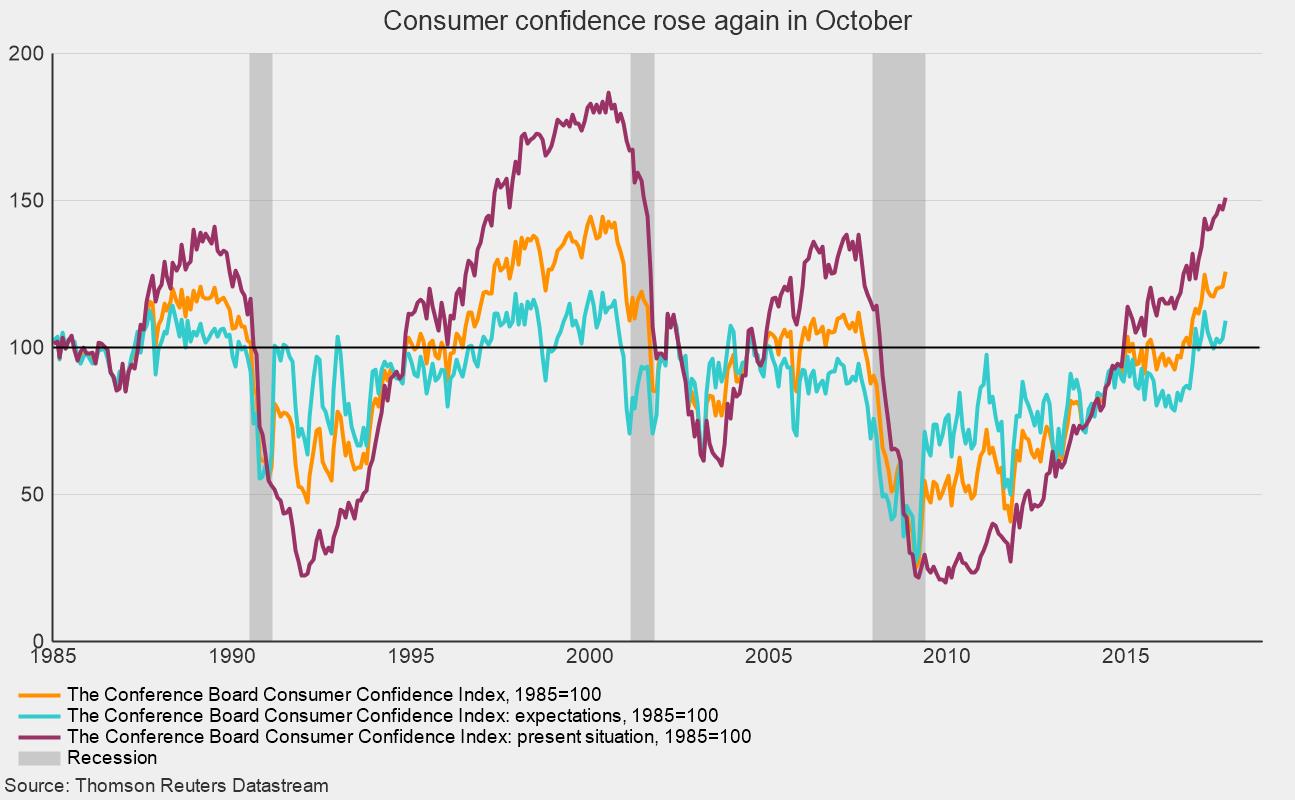Early Signs Suggest the Economy Maintained Momentum in October
Despite the devastating effects of Hurricanes Harvey, Irma, and Maria, as well as the wildfires in California, the early signs of economic activity in October suggest the U.S. economy continues to have positive momentum. In the Chicago area, business optimism moved up again, hitting the highest level since 2011, while, nationwide, consumer confidence also posted another rise.
The latest results from The Conference Board show overall consumer confidence rose in October to the highest level in almost 17 years. The consumer-confidence index came in at 125.9 versus 120.6 in September. The present-situation index rose to 151.1, supported by a favorable view of the job market, while the expectations index rose to 109.1 from 103.0.
According to the report, “Consumers’ assessment of current conditions improved, boosted by the job market which had not received such favorable ratings since the summer of 2001. Consumers were also considerably more upbeat about the short-term outlook, with the prospect of improving business conditions as the primary driver. Confidence remains high among consumers, and their expectations suggest the economy will continue expanding at a solid pace for the remainder of the year.”
The Chicago Business Barometer rose to 66.2 from 65.2 in September. That is the highest reading since March 2011. The Chicago Business Barometer is a composite diffusion indicator made up of the production, new orders, order backlogs, employment, and supplier-deliveries indicators from a survey of purchasing and supply-chain managers, primarily from the Institute for Supply Management–Chicago. The survey panel contains both manufacturing and nonmanufacturing firms. An indicator reading above 50 indicates expansion compared with a month earlier while below 50 indicates contraction. A reading of 50 is neutral.
According to the media release, production, new orders, and order backlogs all rose while employment and supplier deliveries slipped from the prior month. New orders rose to their highest level since June and the second highest since May 2014 while production hit its highest level since August 2014. Backlogs hit the highest level in 43 years.
Employment fell below 50 for the fourth time in 2017. Survey respondents have repeatedly reported a shortage of skilled and trained workers and have resorted to having existing staff working overtime or to hiring temporary workers. More recently, some firms reported losing their skilled workers for higher wages at other firms.
Overall, the early indications are that the U.S. economy is maintaining positive momentum in the early part of the fourth quarter. That positive momentum is a favorable sign for the upcoming holiday selling season and suggests the risk of recession remains low.



